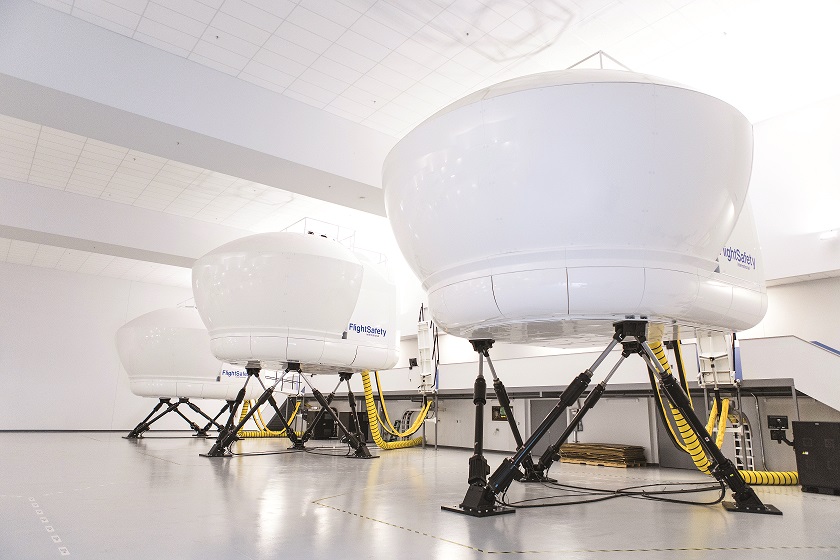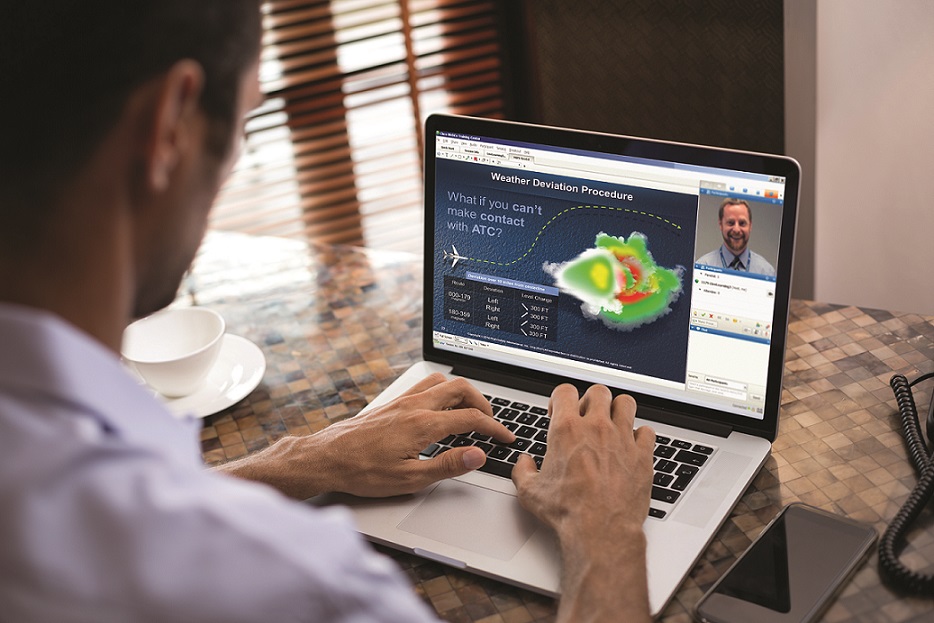For seven decades, FlightSafety International has been at the forefront of training technology and innovation. Starting with its first manufacturer-approved training devices that captured the flight operations of countless aircraft, FlightSafety has continually expanded and refined the technological resources that aviation professionals depend on.
As the training needs of pilots and technicians evolve, FlightSafety is developing more ways to interact with them virtually and remotely. FlightSafety Customers trust they’re receiving the most advanced training possible, as the company combines its technological advantages with its highly experienced and knowledgeable instructors. The result is a unique training experience that promotes and enhances proficiency and safety.
FlightSafety leverages its years of flight training experience and world-class design and engineering to provide a powerful suite of training products and solutions that meet real-world needs. Here are some of the ways FlightSafety is building on its 70-year legacy of innovation. 
The FS1000 Full Flight Simulator and MATRIX
Developed and tested by highly qualified engineers, instructors and subject matter experts, FlightSafety’s mission-ready devices enhance training at every level. That begins with the FlightSafety-developed and manufactured FS1000 full flight simulator. Its lightweight and highly robust modular design offers configuration flexibility and ease of systems integration.
The Level D-qualified simulators support advanced audio, motion and visual capabilities, all built to the industry’s highest standards and approved by OEMs for their compatibility. Built at a state-of-the-art, 375,000-square-foot facility in Oklahoma, FlightSafety simulators are also in the training facilities of airline and government customers, allowing them to offer highly effective, cost-efficient training to their flight crews.
The simulator is part of a larger FlightSafety training experience – the MATRIX integrated learning system. MATRIX brings the realities of the simulator experience into the classroom and to other training devices.
Driven by the same powerful software that drives the FS1000, MATRIX creates a consistent progression of training via its integrated desktop simulator, courseware and graphical flight-deck simulator.
FlightSafety also offers the MissionFit interactive training system, a mobile and modular flight training device engineered to be deployed in almost any location for maximum training accessibility.
VITAL 1150 Visual System and CrewView Display
FlightSafety’s VITAL visual system provides pilots with simulator training that features realistic, detailed, high-resolution views designed to enhance safety. Powered by the VITAL 1150 image generator and the CrewView collimated glass mirror display, FlightSafety provides unprecedented training realism and resolution.
VITAL features industry-leading low-latency host transfer rates, up to 8K resolution and refresh rates up to 120Hz. The result is the highest fidelity for any visual system available.
CrewView is the most crisp, clear, consistent, and dependable display solution available today, offering fields of view in excess of 60 degrees vertical and 300 degrees horizontal. It offers distortion-free, true and consistent images. This superior optical performance is crucial to achieve today’s flight training needs.
The CrewView glass mirror display provides superior optical performance and sharper image clarity with significant advances in fidelity. CrewView fills the entire aircraft window, eliminating ground rush distortions and allowing the greatest level of effectiveness in training. 
Online Instructor-Led LiveLearning
Already a leader in online and self-paced instruction, FlightSafety expanded its digital offerings in 2020 to reach customers who were unable to travel due to the pandemic. With instructor-led LiveLearning, pilots and technicians train with industry-leading subject matter experts from their own sites.
These classes offer real-time engagement with peers and instructors, allowing for complex training at a distance. LiveLearning curriculum is designed for online delivery, developed and perfected to maximize the impact of the online training experience.
LiveLearning allows pilots to begin their recurrent training remotely, then complete it in the simulator within 90 days to meet regulatory approval requirements. The courses include live class surveys, recordings, videos, and interactive demonstrations, all optimized for multi-platform compatibility including desktops, tablets and laptops. LiveLearning courses also include general training subjects, in addition to a growing library of type-specific pilot and maintenance training.
3D Virtual Aircraft and Mixed Reality
Beginning with training for Pilatus aircraft, FlightSafety is launching Virtual Aircraft, an immersive 3D learning experience aimed to assist pilots and instructors in exploring the aircraft within the classroom as if they were out on the flight line.
With Virtual Aircraft, students are situated within a real-life contextual environment with the aircraft appropriately scaled in both size and depth. Their interactions with the aircraft’s various components are true to life and happening in real time. This immersive media leads to greater levels of knowledge retention and an increase in transferable skill, building confidence and competency in operation.
Maintenance technicians also benefit from FlightSafety’s new Virtual Engine Trainers, real-time, interactive and animated models of Pratt & Whitney Canada engines. Virtual Engine Trainers allow instructors and students to view the engine and the many individual components in any position or system grouping and even conduct practical maintenance procedures such as part replacement. X-ray and move functionality further enables students to view dynamic cross-sections into nearly every engine part. Borescope inspection training is also available with typical wear and tear simulated throughout the engine, allowing students to practice damage assessment and engine dispatchability. EASA has approved Virtual Engine Training as a method of assessment in up to 50 percent of practical engine training.
FlightSafety has also developed virtual reality training in its Mixed Reality Flight system, which has been utilized by government and defense customers.
The Future of Training
FlightSafety continues to expand its high-tech training offerings to meet the needs of aviation everywhere. Its advances in simulation technology have significantly improved the effectiveness and reduced the cost of training in multiple ways. Trust FlightSafety to continue to lead the way in cutting-edge technology and superior training equipment.